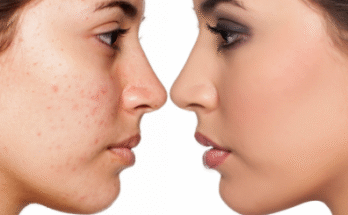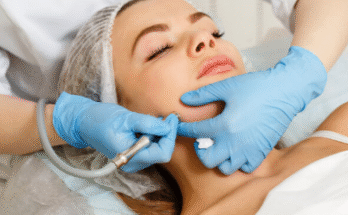Acne is one of the most common skin concerns in the world. It affects people of all ages, though it’s especially familiar to teenagers and young adults. While there are many ways to treat acne, antibiotics have played an important role for decades. When prescribed correctly and used responsibly, they can help calm inflammation, reduce breakouts, and restore confidence in one’s skin. Understanding how antibiotics work against acne can make the process of treatment clearer and more effective.
What Causes Acne
Before diving into how antibiotics help, it’s useful to know why acne develops in the first place. Acne forms when hair follicles become clogged with oil, dead skin cells, and bacteria. The skin naturally produces oil, known as sebum, to keep it soft and hydrated. However, when too much sebum builds up, it can trap dead skin cells inside the pore. This environment creates the perfect place for bacteria called Cutibacterium acnes (formerly known as Propionibacterium acnes) to grow. As the bacteria multiply, the skin becomes inflamed, resulting in pimples, whiteheads, blackheads, and sometimes deeper cystic acne.
The Role of Antibiotics in Acne Treatment
Antibiotics work in two key ways when it comes to acne: they reduce the bacteria that contribute to breakouts, and they help calm the inflammation that makes acne red and painful. This dual effect makes them especially useful for people who experience moderate to severe acne or inflammatory acne that doesn’t respond well to topical creams alone.
There are two main types of antibiotics used for acne: topical and oral. Each has a specific purpose and is chosen based on the severity and location of acne.
Topical Antibiotics
Topical antibiotics are applied directly to the skin. They target acne-causing bacteria on the surface and within the pores. Some of the most common topical antibiotics include clindamycin and erythromycin. These treatments often come in gels, lotions, or solutions and are typically applied once or twice a day. Because bacteria can become resistant to antibiotics over time, topical antibiotics are rarely used on their own. Instead, dermatologists often combine them with other acne-fighting ingredients such as benzoyl peroxide or retinoids. Benzoyl peroxide, for example, helps prevent antibiotic resistance while also keeping pores clear.
Topical antibiotics can be a good choice for people with mild to moderate inflammatory acne. They’re often used for acne on the face and can take several weeks to show noticeable results. Consistent use, under a doctor’s guidance, is key to achieving improvement.
Oral Antibiotics
For more persistent or widespread acne—especially on the chest, back, or shoulders—oral antibiotics may be recommended. These work from the inside out, reducing the number of bacteria throughout the body and helping control deep inflammation. Common oral antibiotics for acne include doxycycline, minocycline, and tetracycline. Some dermatologists also prescribe other types depending on the individual’s needs and medical history.
Oral antibiotics are typically used for a limited time, usually a few months. This approach helps reduce the risk of bacterial resistance and other side effects. During treatment, dermatologists often combine oral antibiotics with topical treatments to maintain long-term control of acne once the antibiotic course ends. For example, a patient might take oral antibiotics for three months while also applying a topical retinoid and benzoyl peroxide to continue managing acne after finishing the oral medication.
How Antibiotics Calm Inflammation
One of the reasons antibiotics are so helpful for acne is their anti-inflammatory effect. Acne lesions are not just caused by bacteria but also by the body’s immune response to that bacteria. When the immune system detects bacterial growth inside a pore, it sends white blood cells to fight the infection. This immune reaction can cause redness, swelling, and tenderness. Antibiotics help by reducing this inflammatory response, making the skin look and feel calmer.
Doxycycline, for example, has been shown to reduce inflammation even at lower doses than those typically required to kill bacteria. This means that some people may benefit from anti-inflammatory doses that minimize bacterial resistance risk while still improving acne’s appearance.
Using Antibiotics Responsibly
Because bacteria can adapt to resist antibiotics, responsible use is crucial. Dermatologists are careful to prescribe antibiotics only when necessary and for the shortest duration possible. Patients are usually advised not to share medications, skip doses, or use leftover antibiotics from previous treatments. These practices help ensure that antibiotics remain effective and that resistant bacteria do not develop.
Combination therapy—using antibiotics with other acne medications—is another way to prevent resistance. Benzoyl peroxide, in particular, has strong antibacterial properties that work differently from antibiotics, making it an ideal partner. Using gentle skincare products, avoiding harsh scrubs, and following a consistent skincare routine also support the healing process and help maintain results after antibiotics are discontinued.
What to Expect During Treatment
Results from antibiotic acne treatment vary from person to person. Some people notice improvement within a few weeks, while for others it can take two to three months. It’s important to continue using prescribed treatments consistently and to follow up with a dermatologist for guidance. Stopping antibiotics too soon can allow bacteria to return and acne to flare up again.
Possible side effects depend on the type of antibiotic used. Topical antibiotics can occasionally cause dryness, mild irritation, or peeling. Oral antibiotics can cause sensitivity to sunlight, stomach upset, or, in rare cases, allergic reactions. Taking oral antibiotics with food and protecting the skin with sunscreen can help reduce some of these effects. If side effects occur, a dermatologist can adjust the treatment plan accordingly.
When Antibiotics Are Not Enough
While antibiotics are helpful for many, they are not always the complete solution. Once bacterial and inflammatory acne are under control, dermatologists often shift focus to maintaining clear skin. This may involve transitioning to topical treatments such as retinoids, azelaic acid, or benzoyl peroxide. In some cases, other medications like hormonal therapy or isotretinoin may be recommended for long-term results. Lifestyle changes—such as maintaining a gentle skincare routine, managing stress, and eating a balanced diet—also play a supportive role in keeping acne under control.
The Importance of Professional Guidance
Acne can be frustrating, but with the right approach, it is manageable. The key is to work closely with a healthcare professional who can tailor treatment to individual skin needs. Antibiotics can be very effective when used under professional supervision, but self-medicating or overusing them can do more harm than good. A dermatologist can determine whether antibiotics are appropriate, monitor progress, and adjust the treatment plan as needed.
Final Thoughts
Antibiotics remain an important part of acne management because they target both bacteria and inflammation—the two main culprits behind breakouts. When used correctly, they can significantly improve the skin’s appearance and health. However, they are most effective as part of a broader, personalized treatment plan that includes proper skincare and follow-up care. Acne may take time and patience to improve, but with expert guidance and consistent effort, clearer skin is achievable.

